
Table of Contents
The Tharparkar Desert, the 18th largest desert in the world, is an arid region in the northwest of the Indian subcontinent. It extends across India and Pakistan and covers an area of more than 200,000 square kilometres.
It is located in the western states of Gujarat and Rajasthan in India and extends across the Kachchh River to the Punjab and Sindh regions of Pakistan, Mirpurkhas, and Badin. This means it is expanding to two countries—India and Pakistan! It is so large that people often cross borders and enter neighbouring countries without realizing it.
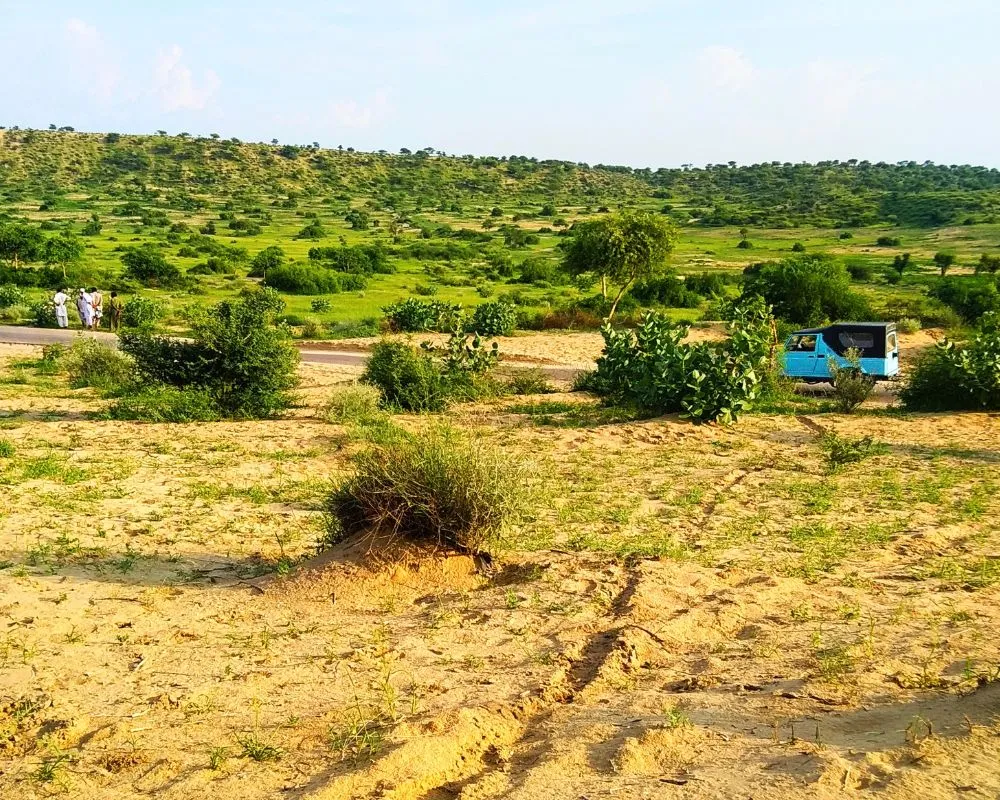
Greenery in TharPakistan
Tharparkar district is the largest of the 29 districts in the Sindh Province of Pakistan, covering an area of 19,637 square kilometres. It also has the most densely populated desert in the world, with 80 people per square kilometre and the largest Hindu population in Pakistan.
The Thar Desert is unique as it is considered the only fertile desert in the world! Although it is a desert, it is capable of producing a large number of crops or plants. Deserts often receive little or no rainfall. However, the Thar Desert receives at least 100 mm of rainfall yearly, much more than most deserts. Historically, a tributary of the Indus River is said to have flowed through the area.
Due to abundant water resources, the largest settlements of the Indus Valley Civilization, Mohenjo-daro and Harappa, were located here. However, between 2000 and 1500 BC, the area became desertified, causing the settlement to be abandoned.
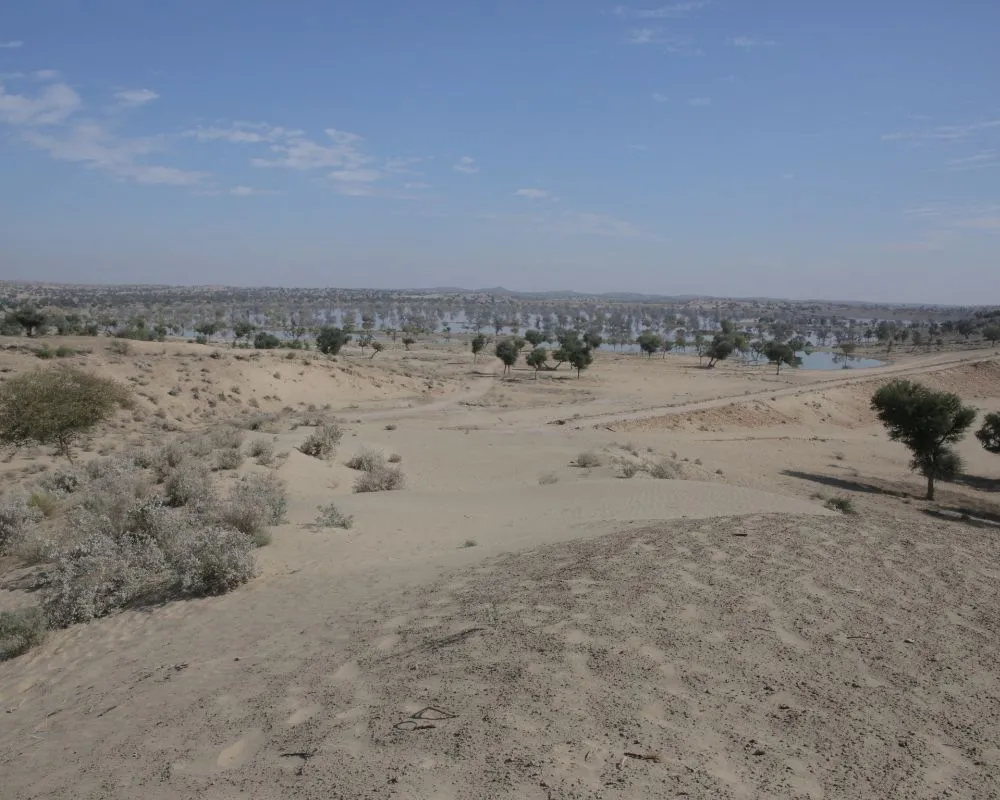
Vast area of Thar Pakistan
Today, the inhabitants of the ecoregion are forced to live a nomadic lifestyle, with most permanent human settlements located near two seasonal streams in the Karoonjhar Hills.
The southwest monsoon season usually begins in July and lasts until September. Its range is limited to 100-500mm, and most fall irregularly and unpredictably. Insufficient rainfall in the region has resulted in significant shortages of water needed to meet human, agricultural and livestock needs. Therefore, residents benefit from the fertility of the land only when it rains.
One example is Durio villager Kaku, who expressed gratitude for his village’s unusually heavy rainfall in 2019. To work for the next three months until harvesting in the last week of November, he invested Rs 20,000 (75 USD)In his land.
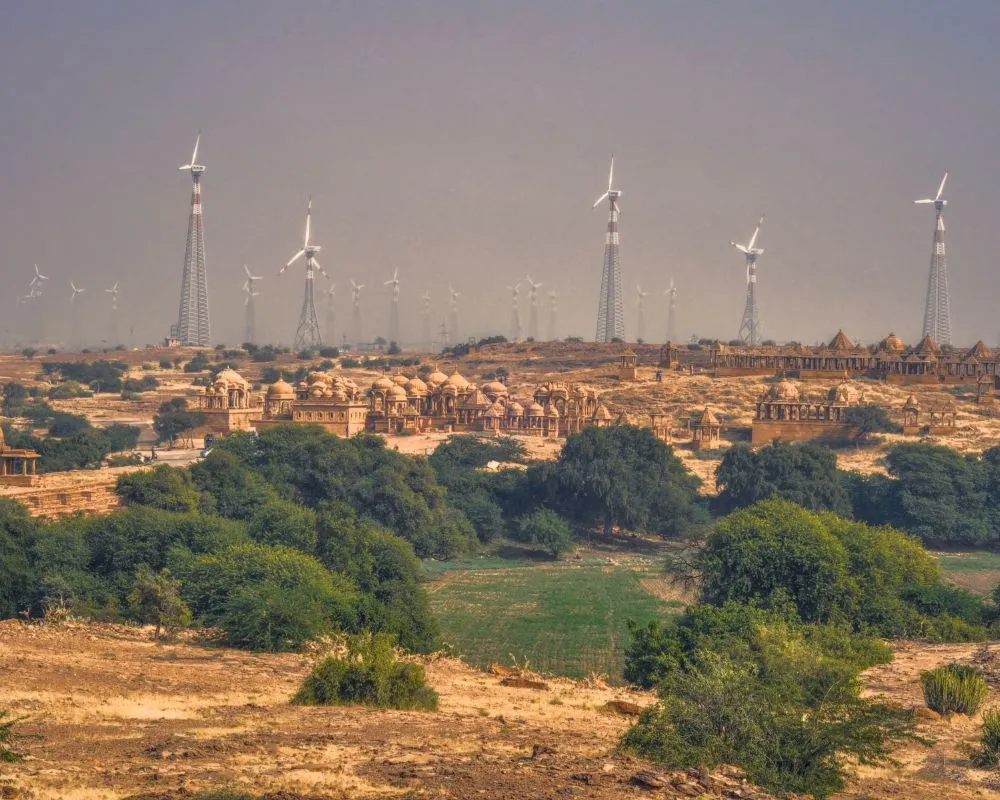
Wind power in Tharparkar
Pond water is a major source of drinking water for humans and animals, and unfortunately, it is contaminated. Nearly 2,000 children under the age of five have died from water-borne diseases in Tharparkar district since 2011. Wells is another less efficient water source in the area. The water table reaches 200 feet deep and gets deeper without rainfall.
The region is short of water, coupled with an extreme tropical desert climate. The hottest summer months are April, May and June, with temperatures reaching over 50°C. The coldest winter months are December, January, and February; winter temperatures are often near freezing.
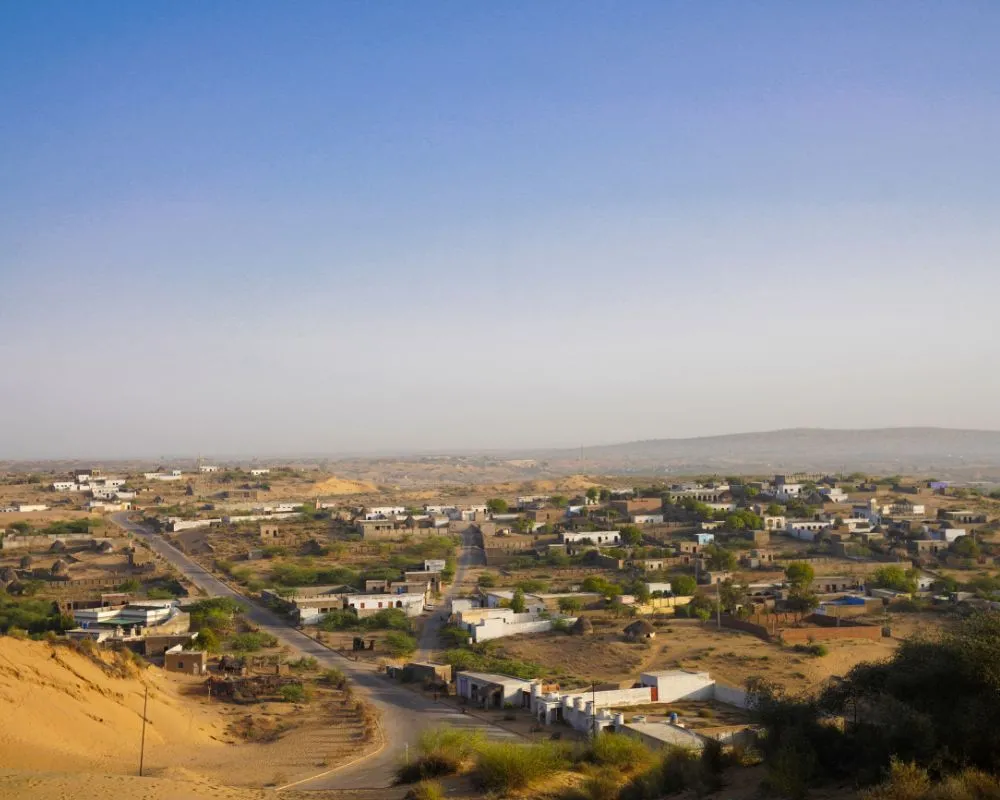
Ariel view of Thar Desert
The area’s topography shows that dunes cover about one-tenth of the area. The rest are rock formations and a pressurized salt lake bottom.
Despite adverse conditions, the Thar Desert continues to prove its land is fertile and habitable. The area is home to 141 species of birds, including the great Indian bustard, and more than 40 mammals, most of which have evolved and adapted to survive in harsh conditions. These include large antelopes such as the blue bull, black bull, and Indian gazelle and smaller species such as field mice.
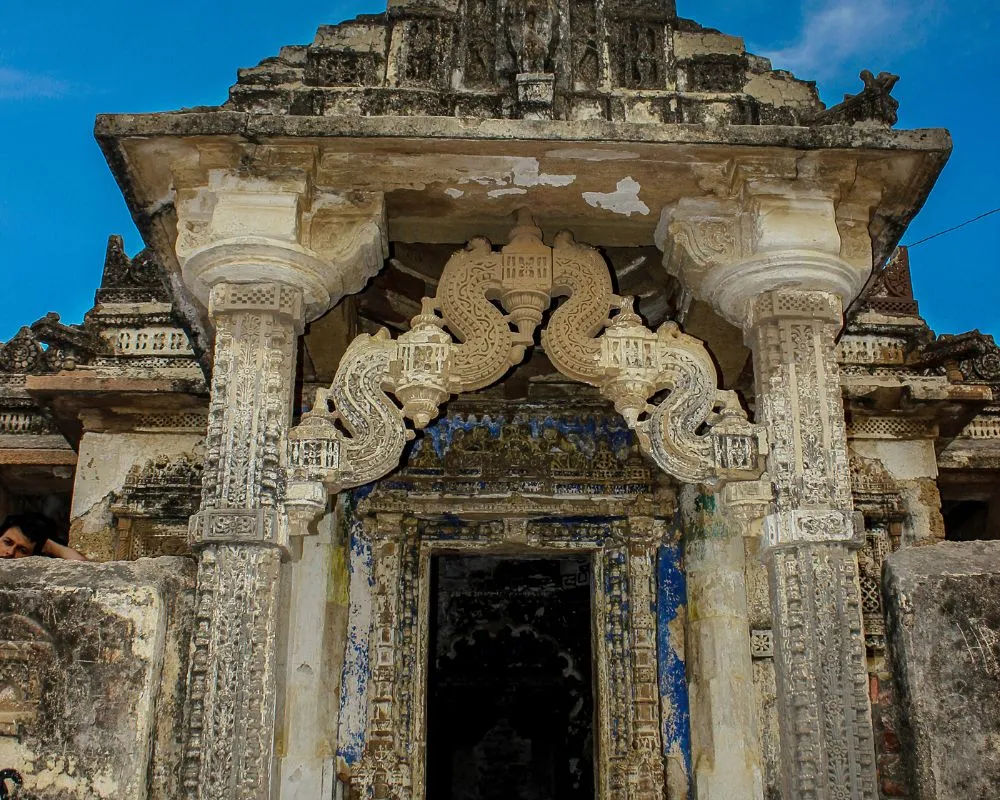
Jai Temple in Thar desert
Their range also includes predators such as gray mongooses, aggressive rattlesnakes and bobcats, and livestock such as camels, sheep, and goats, which residents keep for agriculture. The area’s harsh climate and geological conditions cause sparse vegetation. Due to the dry climate and lack of humidity, it is home to xerophilic plants such as acacia, pasture, tamarisk, and linden, all of which are adapted to dry conditions.
Livestock grazing is intensive as cattle and cattle rearing are the main source of income for the people of the Thar Desert. Conversely, grazing livestock results in poorer soil fertility and negatively impacts native plants. It also leads to soil erosion, degradation, and the destruction of the Thar Desert ecosystem.
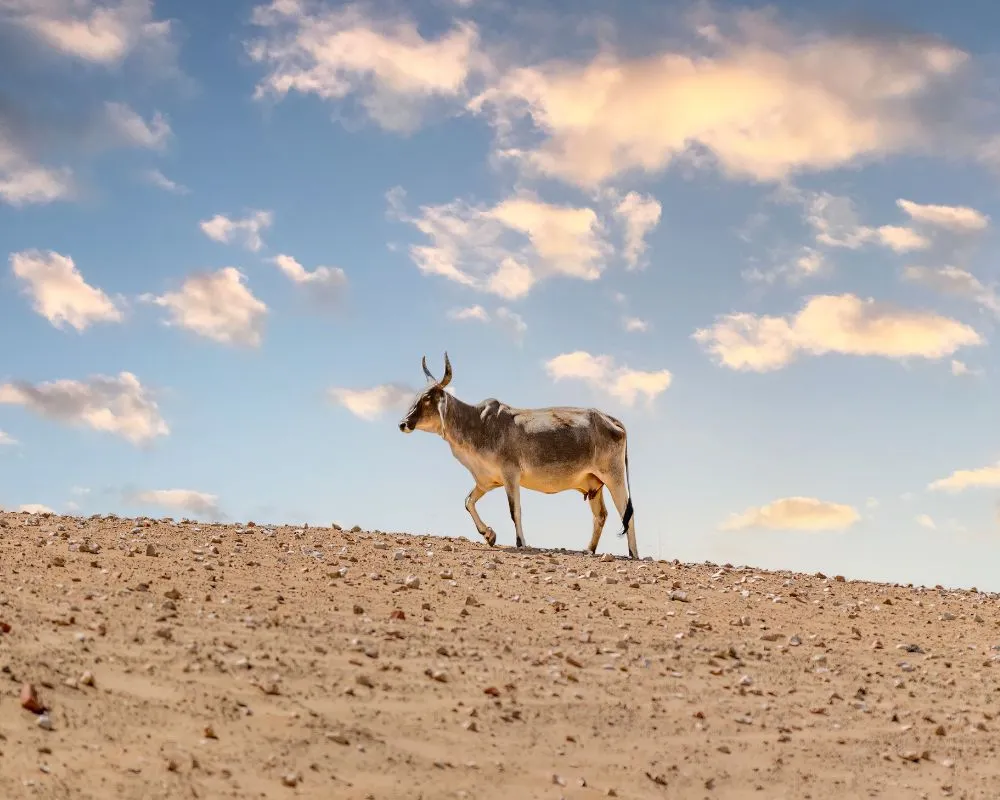
Livestock in Thar
Agricultural production, especially Kharif crops, is another source of income. Summer crops include pulses such as bajra, guar, jowar, sesame, and groundnut.
Unfortunately, climate change is worsening the harsh living conditions in the Thar Desert. Pakistan, as a whole, is suffering from the consequences of global warming due to pollution caused by first-world countries.
However, this has led to new extreme temperatures, severe drought and reduced rainfall in the Thar Desert. The scarce water and food resources in the Thar region are expected to decrease to alarming levels due to the increasing demand for water caused by global warming.
In 2019, youth activist Akash Himirani said: “Due to climate change, the monsoon has been delayed and the first rains are arriving in the desert about a month late, which could severely impact harvests.”
Climate change will be a major driver of biodiversity in the Thar region, with changes in life cycles and the loss, migration and invasion of new habitats.
However, the Thar Desert has extensive protected areas in India and Pakistan, with proper management and protection to protect the region’s biodiversity.
The Desert National Park in the Indian state of Rajasthan represents the Thar Desert ecosystem and its diverse fauna. Pakistan’s Nara Desert Wildlife Sanctuary has the largest population of endangered crocodiles.
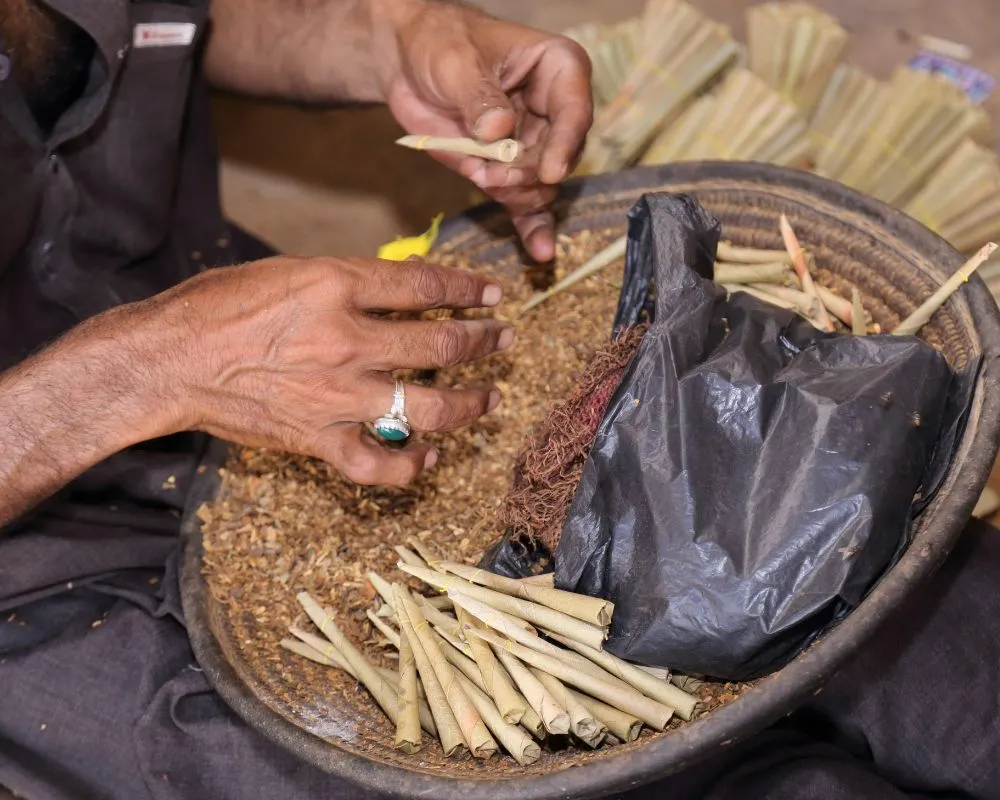
Cigratte making in Thar
Meanwhile, Larsohanla National Park and Biosphere Reserve is a UNESCO-declared biosphere reserve. Tharparkar Sanctuary is also an important bird sanctuary located in the Churu region of India. Rann of Kutch Wildlife Sanctuary in Pakistan is another important bird sanctuary and Ramsar site.
Overall, the Thar Desert is a land of fertile soil and rich species of flora and fauna. It has the potential to become a region that can provide homes and livelihoods to many people and generate income for the countries of India and Pakistan. Given its poor living conditions, the area’s potential could be better.
However, everything is possible with proper climate control, environmental protection measures, and more efforts to expand its range. The governments of India and Pakistan can transform facilities such as water and gas to transform the barren lands of the Thar Desert into prosperous and livable ecological zones.
Since 2017, Saba Ghani has been serving as the talented and dedicated chief content writer for Pakistan Tour and Travel & EMHI Solutions. With her exceptional writing skills and in-depth knowledge of the travel industry, she has been instrumental in crafting engaging and informative content that captivates the audience. You can catch her at saba@pakistantourntravel.com or Twitter
12Years of relentless tourism Services in Pakistan